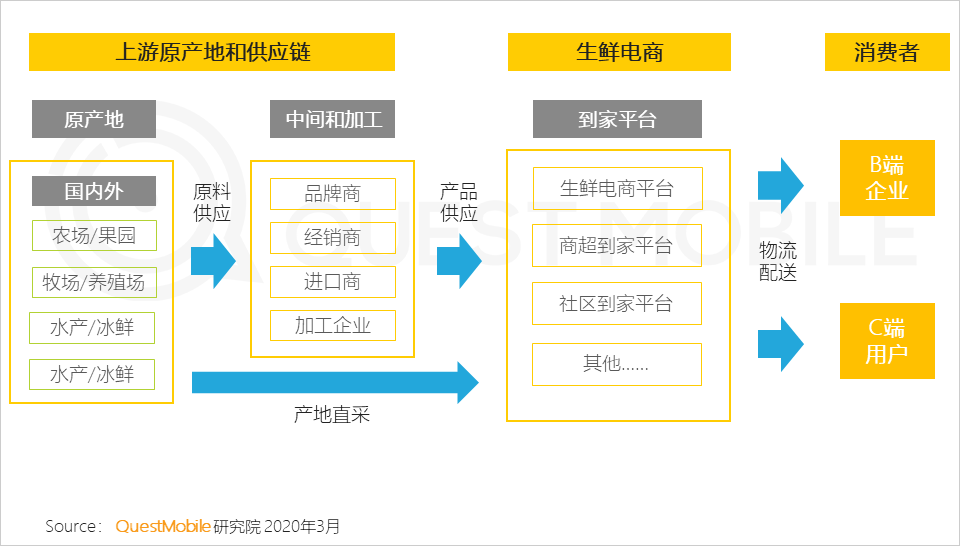According to QuestMobile data, fresh produce is close to 70 million in the 30 days after the Spring Festival and 44 million in the same period last year. At the same time, the average daily use frequency and duration have increased by more than 20%.
Editor’s note: This article comes from WeChat public account < a href = "https://mp.weixin.qq.com/s/px6JreBNcUoEM7aCher1Qg"> “QuestMobile” (ID: QuestMobile) , author: Mr.QM.
Original title “ QuestMob ile 2020 Home-to-Home Economic Development Research Report: The epidemic has driven the home-to-home model growth, and three models of fresh e-commerce, supermarket-to-home, and community-to-home have begun PK. 》
Did you catch the monkeys in children’s shoes, what did you look at in the last “War Epidemic Report”? There are some children ’s shoes in the backstage that are still swearing online learning: “Mr. QM, you are simple, you have to go to class every day, you do n’t have pocket money, you ca n’t buy snacks. Do you understand this pain? It’s like, let you go to work every day, don’t pay you, don’t let you play games … “(⊙o⊙) … Mr.QM really doesn’t understand, but the uncle Ape next to it saw it and touched it Increasingly steep, smooth forehead, said leisurely: “I rub it, this is not the life of a married program ape, the class is added, the money is handed in, the game is not allowed to beat …”
Children’s shoes, congratulations, and realize the boring life in 20 years in advance! In other words, Mr. QM can’t help you any more, but can only make you mentally prepared in advance. Today, Mr.QM will share with you the economic and social structural changes previewed by the “epidemic”. Remember, it will always come. Do n’t worry. O (∩_∩) O Closer to home, at present, the domestic epidemic situation is improving, production and consumption are recovering. Compared with the rebound rate of the catering and accommodation industry after SARS, it is expected that these industries will soon recover. At the same time, the outbreak of the Internet, it is currently possible to continue. SARS has brought e-commerce and logistics to life, but it has not eliminated offline. Under the structural change, a symbiotic situation will continue.
QuestMobile data shows that the MAU of fresh produce at home is close to 70 million a month after the Spring Festival, compared with 44 million in the same period last year. At the same time, the average daily use frequency and duration have increased by more than 20%. In terms of user portraits, the new users are mainly those in first- and second-tier cities, those over 31 years of age, and high online consumption capabilities. Like e-commerce during the SARS period, in contrast, the “no contact + online” fresh home has gradually replaced the vegetable market is unavoidable. The fresh food e-commerce, supermarket home, community homeThis mode has also started a positive PK, and the typical players of each have already started the sequence.
Specifically, in February 2020, Hema, Dingmao, and fresh produce are the top 3 in the fresh food e-commerce field. MAU reached 17.19 million, 14.54 million, and 10.3 million, respectively. The multi-points in the field Top3, RT-Mart’s excellent freshness, and Yonghui Life have MAUs of 17.3 million, 2.48 million, and 2.34 million, respectively; the top 2 players in the community home field, Baiguoyuan and Suning, have MAU of 1.43 million and 980,000. At the same time, the WeChat Mini Program has also become a key entry point. Wal-Mart Mini Program has an average daily active user size of nearly one million. JD.com ’s home grocery supermarket fresh produce e-commerce increased to 766,000, and Yonghui ’s YH Life + also increased to 651,000. The daily life of RT-Mart Youxin WeChat Mini Program increased from 50,000 to 260,000, a nearly four-fold increase.
Of course, the change doesn’t stop there. During the entire epidemic, the number of industry players in the industry changed from 21 to 26, and the number of reach users also spread to users over 36 years of age and users in second-tier cities. These are further industry changes. Precursor of the outbreak, as for the possibility of the next e-commerce? Just wait and see.
Research Description
The research scope of the “home economy” in this report: fresh food e-commerce + supermarket home + community home service;
The data selection time of this report: After the Spring Festival of 2019, it means February 11 to March 12, 2019, and after the 2020 Spring Festival, it means February 3 to March 3, 2020;
The data selection rules of this report: including the first working day after the Spring Festival, a total of 30 days; 2. At present, the giants have deployed fresh retail and home-based businesses, and have implemented an Internet-based operating model that was mainly offline. Retrofit and integration
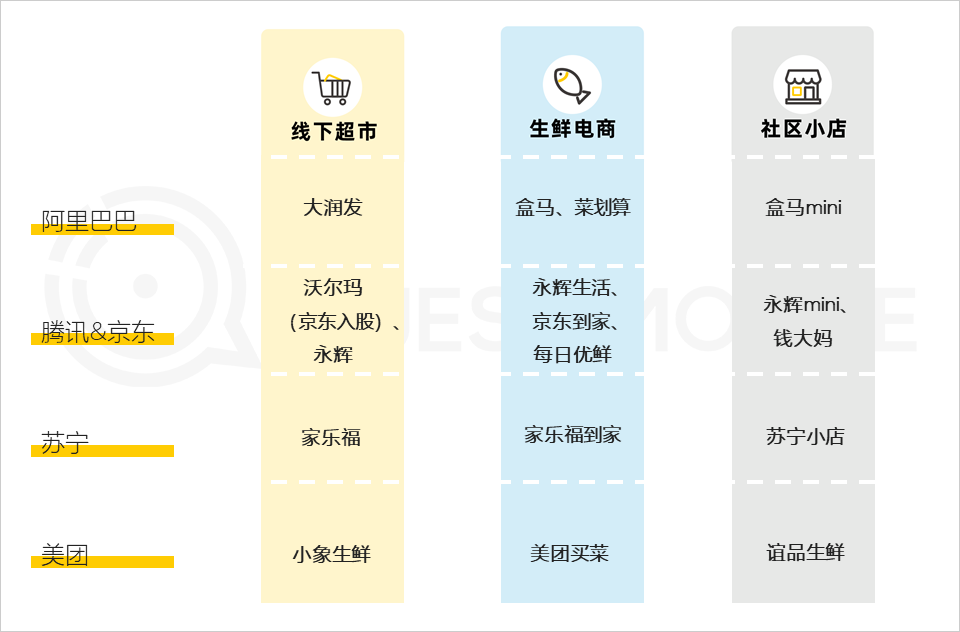
Fresh home industry welcomes rapid growth
1. With the transfer of fresh commodities from vegetable markets to supermarkets, e-commerce and other channels, and the demand during the epidemic period has been superimposed, the fresh-food e-commerce industry has welcomed the growth of user scale. 30 days after the resumption of the Spring Festival, the number of active users is close to 7. Ten million
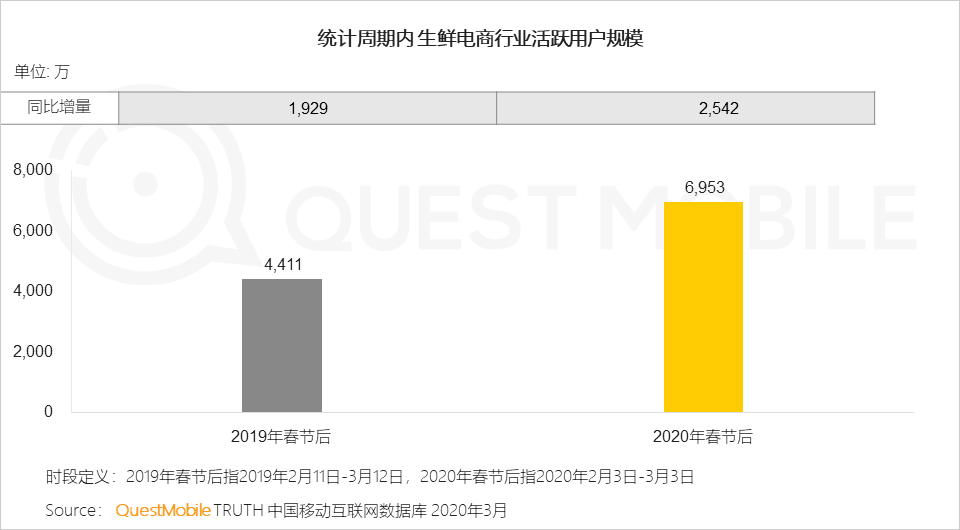
2. The epidemic has reduced the number of users going out and promoted the stickiness of the fresh food e-commerce industry. The fresh food e-commerce industry has achieved a double increase in the number of daily uses and the average daily use time.
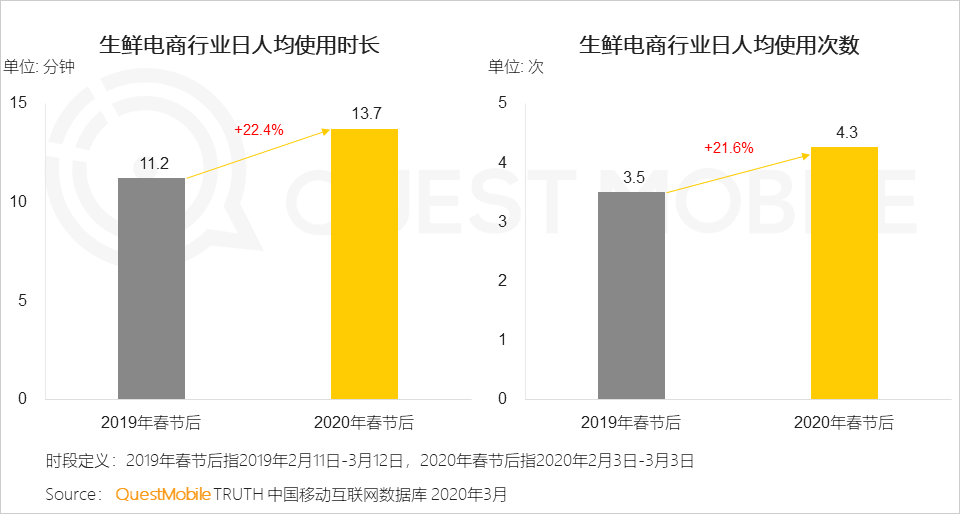
3. The new users in the fresh food e-commerce industry are more convenient for logistics and distribution in first-tier and new first-tier cities. At the same time, the proportion of users who are over 31 years old and have higher online consumption capabilities has increased significantly.
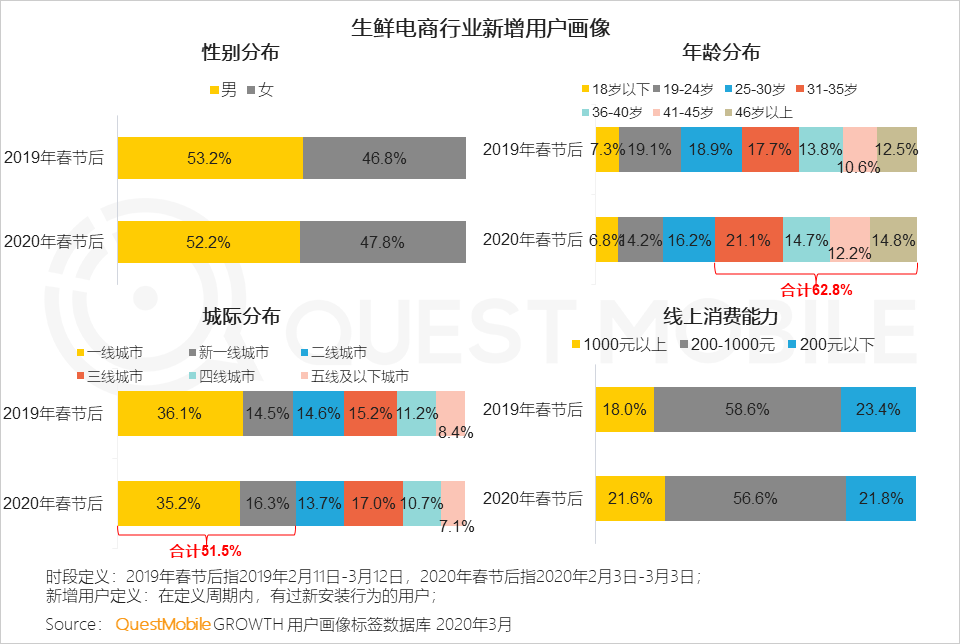
The development of the three typical models of fresh home is different
1. The epidemic has caused offline traffic to decrease, and the demand for online fresh purchases by users has surged. The platforms have launched innovative services such as contactless distribution, and fresh homes have gained user favor
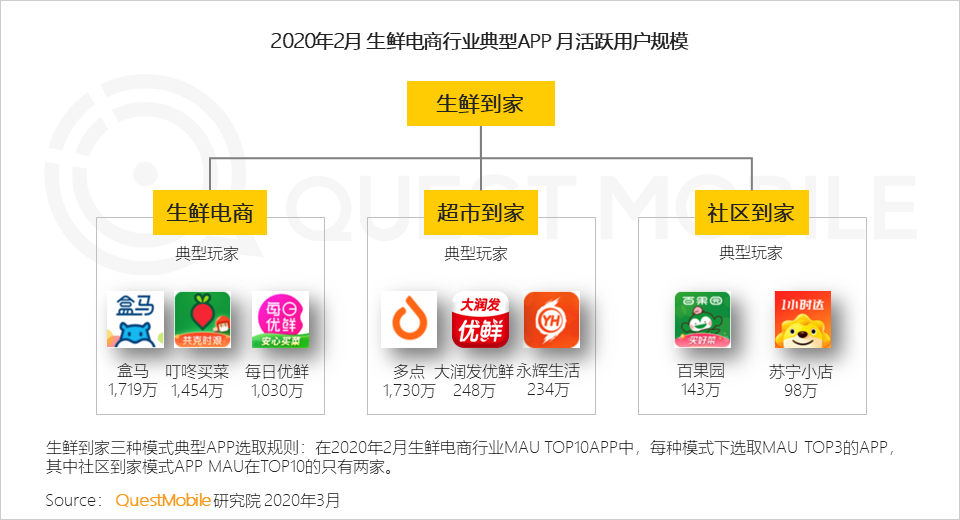
2, fresh e-commerce
2.1 The epidemic has accelerated the development of the fresh-food e-commerce platform. The average daily user size of Hema is doubled in the store-integrated store. The pre-storage model of Dingmao ’s grocery shopping and the daily growth of the number of excellent fresh users have increased.
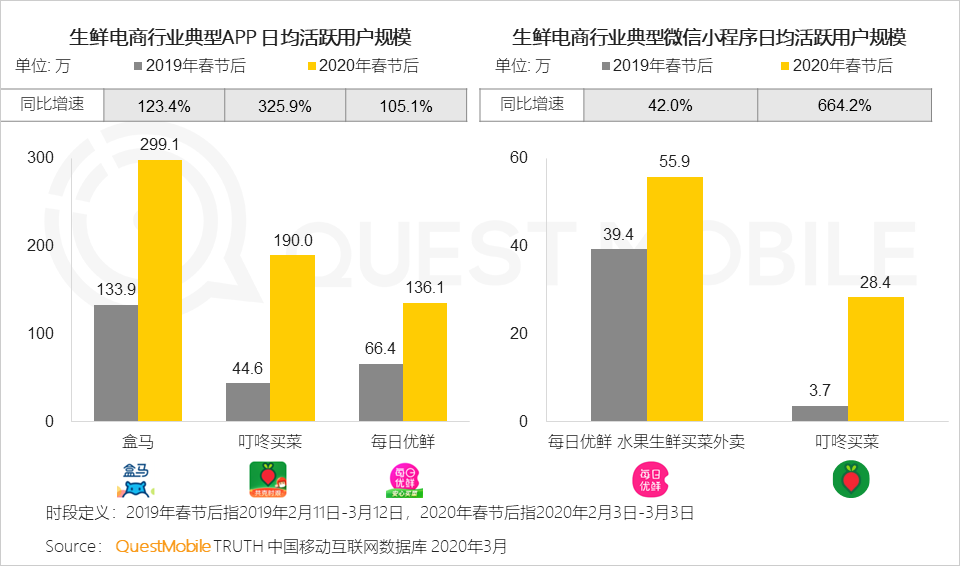
2.2 The epidemic has set off a cooking enthusiasm for the whole nation. Hema, Dingdong shopping, and Daiyouxian rely on strong supply chain advantages to bring in new results, and users are more active.
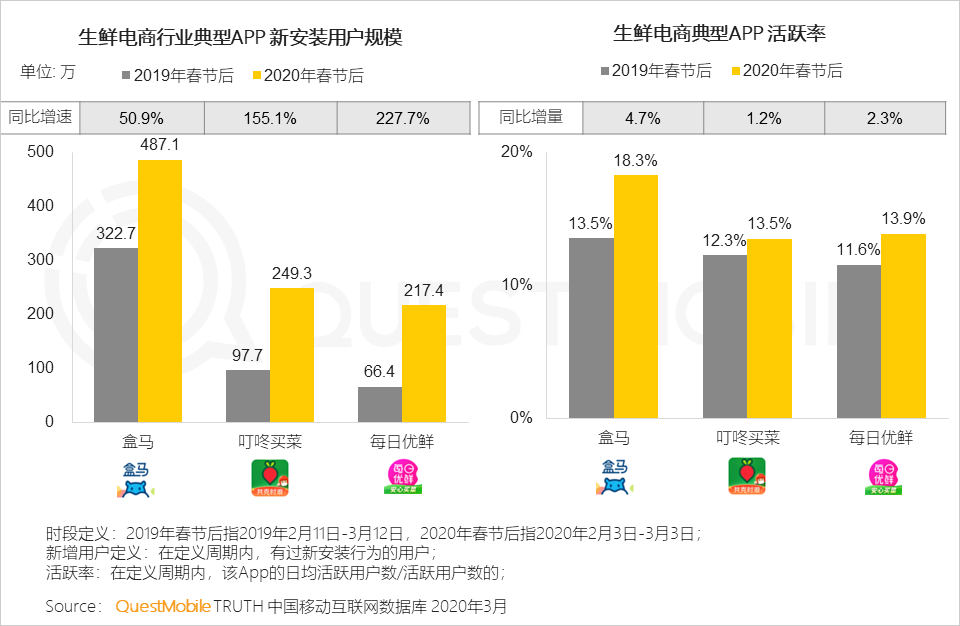
3. Supermarket arrives home
3.1 The epidemic changed the user ’s shopping habits in physical stores, the demand for home delivery shopping broke out, the strong supply chain capabilities of the supermarkets to meet user needs, and the typical APP users in supermarkets have grown significantly.
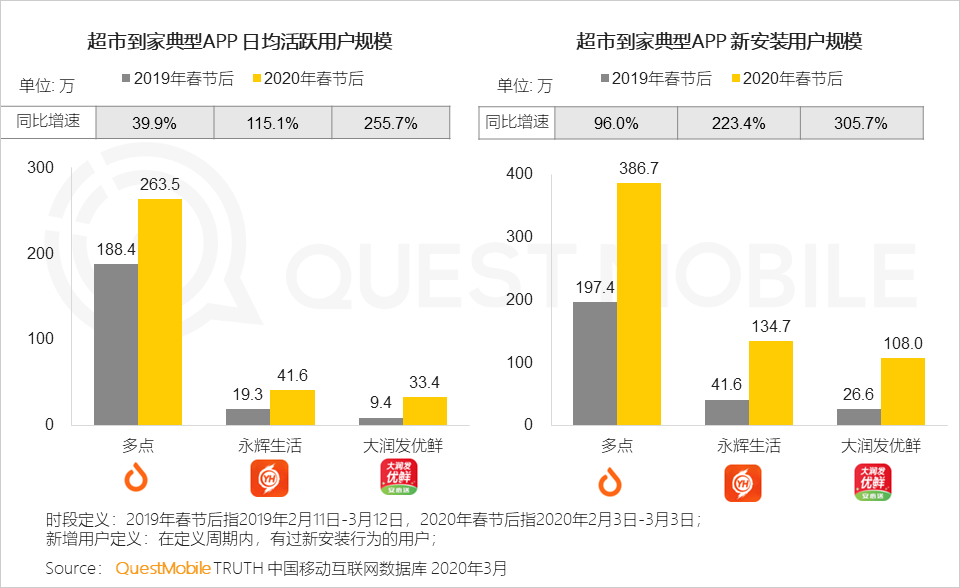
3.2 Offline promotion and drainage, time-limited offers, and superimposed epidemic demand for home use. WeChat Mini Programs provide traffic entry for Supermarkets. Wal-Mart WeChat Mini Programs have an average daily active use scale of nearly one million. RT-Mart’s YouXin WeChat Mini Program has an increase of 4 Times
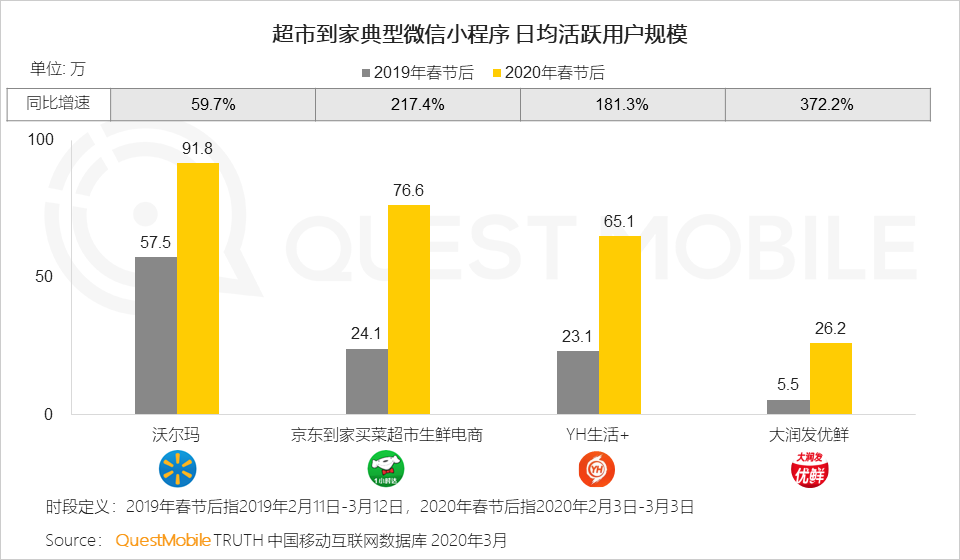
3.3 The typical APP users at supermarkets have increased their stickiness significantly, and the average daily usage time and daily average usage times have increased to varying degrees.
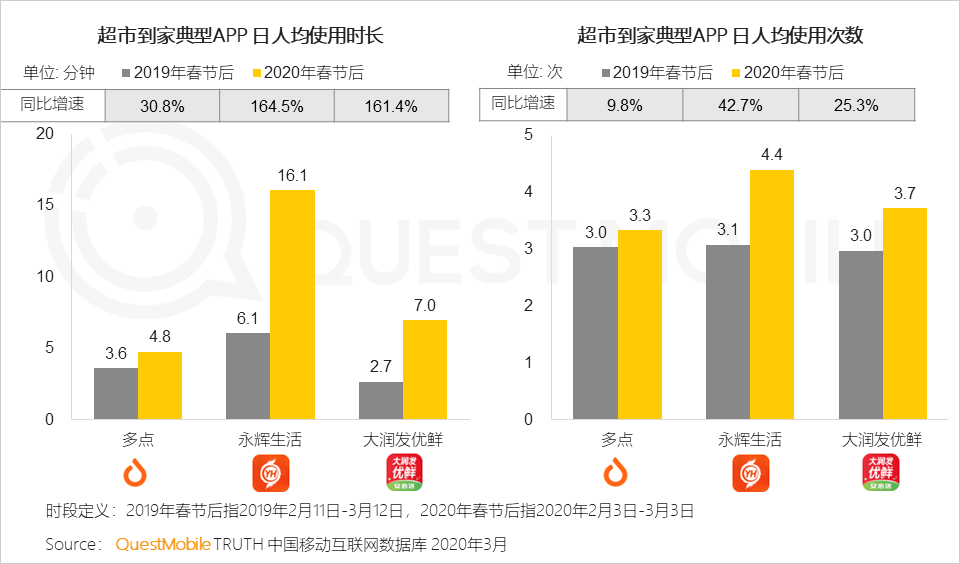
4.Community homep>
4.1 The Baiguoyuan APP expands into “big fresh”, and the number of users increased significantly during the epidemic, and the WeChat Mini Program of Shihui Group, represented by community group purchases, grew brightly.
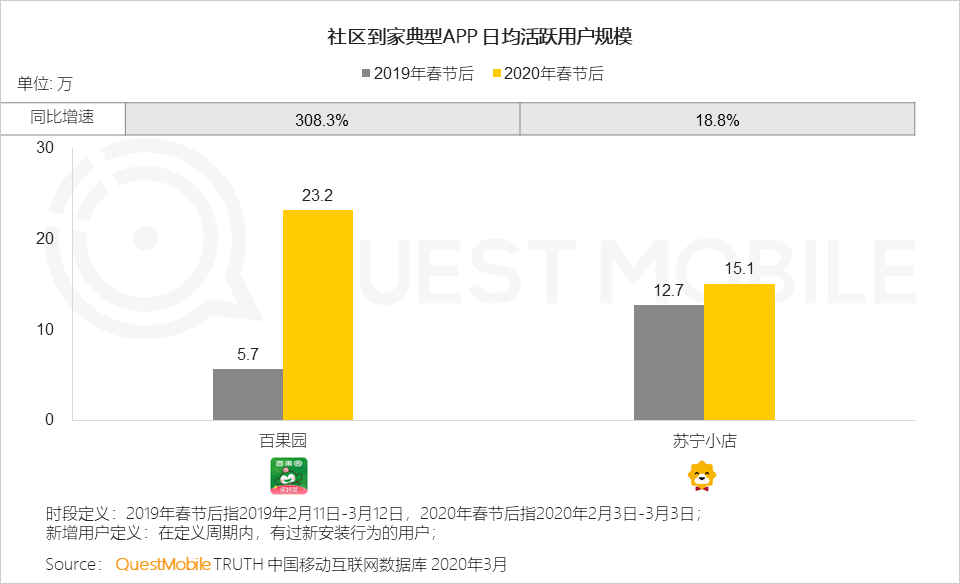
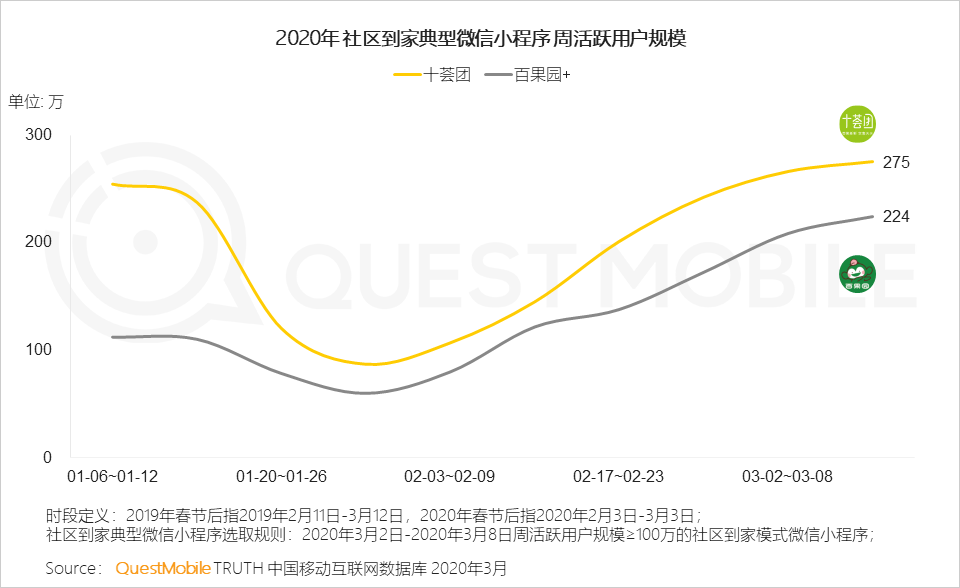
4.2 Suning stores opened stores near various communities. The advantages of community-to-home services are obvious. The activity rate of Suning stores increased during the epidemic.

4.3 During the epidemic, the community-to-home platform provided convenience to community residents and increased user stickiness.
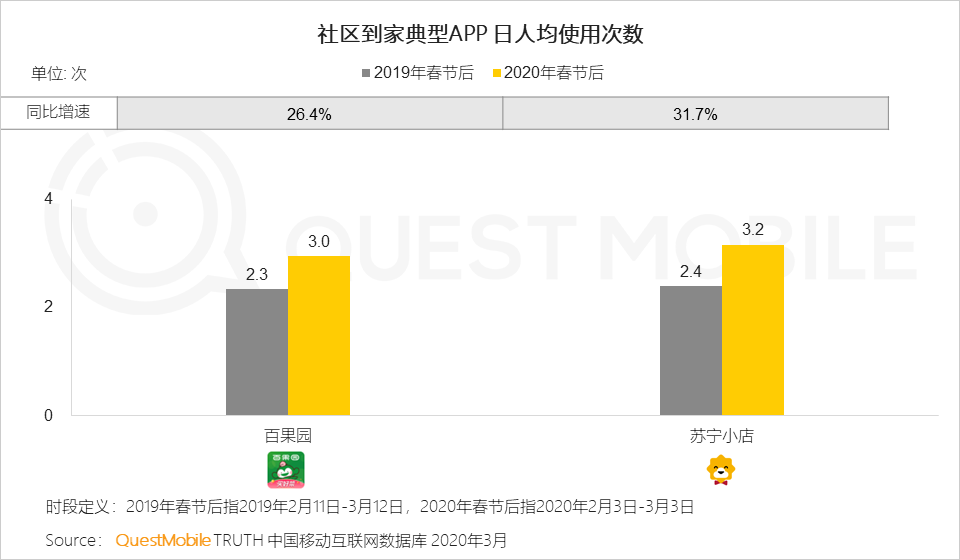
Fresh development trend of coming home
1. The epidemic affects consumer spending habits. The fresh food e-commerce industry has reached more second-tier and above urban users who are older than 36 years old and have more convenient logistics. The new user structure provides the foundation for industry development.

2, more and more fresh e-commerce players enter the game, head supermarkets and fresh e-commerce platforms with strong supply chain capabilities will stand out
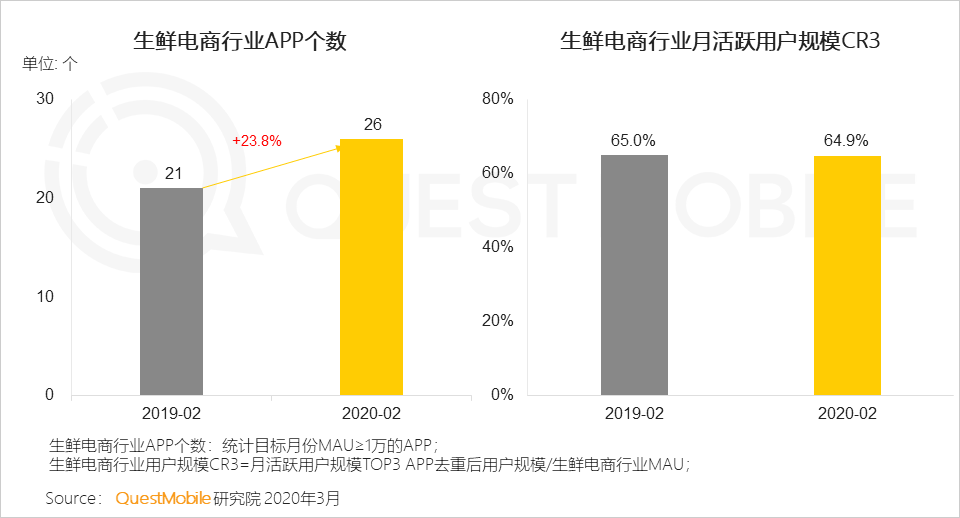
3. Supply chain optimization, assortment of categories, and efficient logistics and distribution are the key success factors for the fresh-to-home sector.
